Walking in the Footsteps of History: The Churches of the Old City of Jerusalem
The Old City of Jerusalem is home to some of the most beautiful and unique churches in Israel and certainly the most important church of all, the Church of the Holy Sepulchre. This is, according to the Orthodox and Catholic church, the place where Jesus Christ was crucifed, burried and resurrected. In 1982, the Old City was put on the List of Worldheritages in Danger by UNESCO. The site is at risk due to urbanization of its surroundings, mass tourism, and geopolitical issues.
Church of the Holy Sepulchre. Photo credit: © Dmitry Mishin
Church of the Holy Sepulchre
The largest and most important church in Jerusalem’s Old City is the Church of the Holy Sepulchre. It holds the 10th to 14th Stations of Cross along the Via Dolorosa which Jesus took on his route to his crucifixion. On this site Jesus was stripped (10th Station); nailed to the cross (11th Station); died on the cross on the Rock of Golgotha or Hill of Calvary (12th Station); taken down off the cross (13th Station ) and Jesus was laid to rest in his tomb or Sepulchre at the 14th Station.
An early church on this site dates back to 333 AD but it was destroyed by the Persians about 300 years later and a new structure was constructed. This too was leveled in 1010 AD and under the Crusaders the church was rebuilt and inaugurated in 1149 AD. The church is shared by the Catholic, Greek Orthodox, Ethiopian, Coptic, Armenian, and Syriac Orthodox churches.
The vast church is adorned with many stunning works of liturgical art, there are many small altars and individual chapels within the church but the focus of the structure is the large Rotunda where Jesus’ tomb is located. At the entrance to the church is the Stone of Anointing where Jesus’ body was laid after being removed from the cross. All major Christian events and festivals are celebrated in the church.
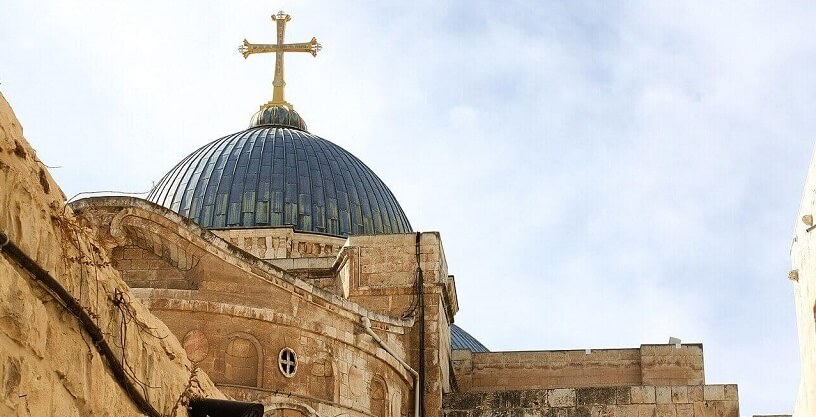
Church of the Holy Sepulchre. Photo credit: © Shutterstock
Lutheran Church of the Redeemer
This German Lutheran Church of the Redeemer is in the Christian Quarter and was constructed in the 19th century on the site of a Crusader church; the Crusader gate was incorporated in the side of the present church. At one point the church functioned as a hostel and hospital for Crusaders. The first Chapel of St. John was constructed here in 1871 and in 1898 the Church of the Redeemer was built by Friedrich Adler.
Above the entrance is the sign of the lamb of God and on one side is an eagle, the symbol of Imperial Germany while on the other side is the Maltese Cross, a symbol of the Crusader order of St. John. The church’s white square bell tower is 48 meters high making it the tallest tower within the Old City walls. It is possible to climb a spiral staircase within the tower for views across the city.
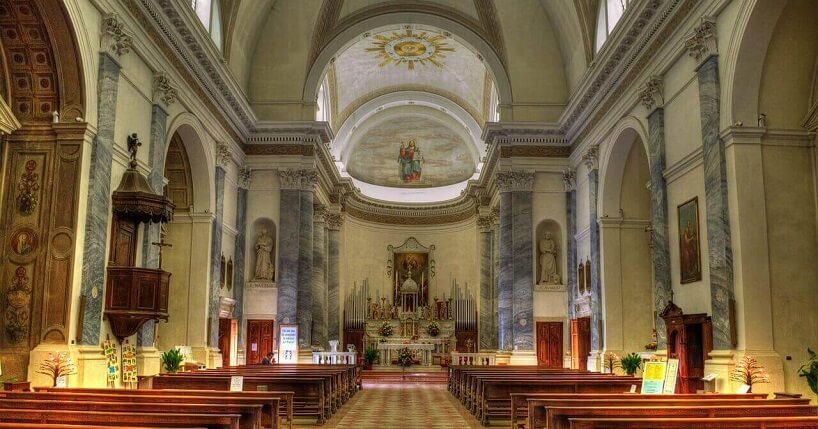
German Lutheran Church of the Redeemer, Jerusalem. Photo credit: © Shutterstock
Church of St. John the Baptist
This Greek Orthodox Church and monastery of St. John the Baptist in the Christian Quarter consists of a 5th-century Byzantine church on a lower level and an upper dome and a double bell tower from the 11th century Crusader era. The lower church holds relics of John the Baptist and was destroyed in the 7th century. The Knights Hospitallers took over the site in the 11th century and used the space as a hostel and hospital. The Hospitallers were a military group of Christians charged with protecting the Holy Land. They saw the renovation of the church site. Again in 1839 the church and monastery were renovated.
St. Anne’s Church
St Anne's Church, Jerusalem - believed to be the birthplace of Mary. This is a large building close to the Lions’ Gate adjacent to the Pools of Bethesda. The church was built during the Crusader era over the ruins of a 5th century Byzantine church. It is dedicated to the Virgin Mary’s mother Anne and father Joachim; Mary is believed to have been born in a cave-dwelling now located beneath the church in the church crypt. An inscription above the entrance dated 1192 tells of how Saladin converted the church to a school. The interior is divided into three halls by thick pillars supporting a vaulted ceiling.
St Anne's Church, Jerusalem. Photo credit: © Shutterstock
Chapel of the Flagellation
This Catholic Franciscan church complex is situated at the 2nd Station along the Via Dolorosa where Roman soldiers flogged Jesus. The first chapel on this site was constructed in 1832 on land given to the Franciscans by the conquering Egyptians. It was rebuilt in the 1920s and designed by well-known Italian architect Antonio Barluzzi. A sealed gate entrance on the outer wall of the monastery is topped with a metal seal bearing the 5 cross symbol of the Franciscans and the arms of Jesus and St. Francis crossed over a crucifix.
The church’s best features are the large stained glass windows on three sides of the church. The church of Condemnation is also accessed from the inner courtyard, it commemorates where Jesus was condemned and where he took up his cross. This church has 5 white domed roofs and large stained glass windows. The church interior is predominantly white with a colorful mural behind the altar and pink marble columns supporting the ceiling. Archaeological findings are displayed on the western wall outside the chapel and in the garden courtyard.
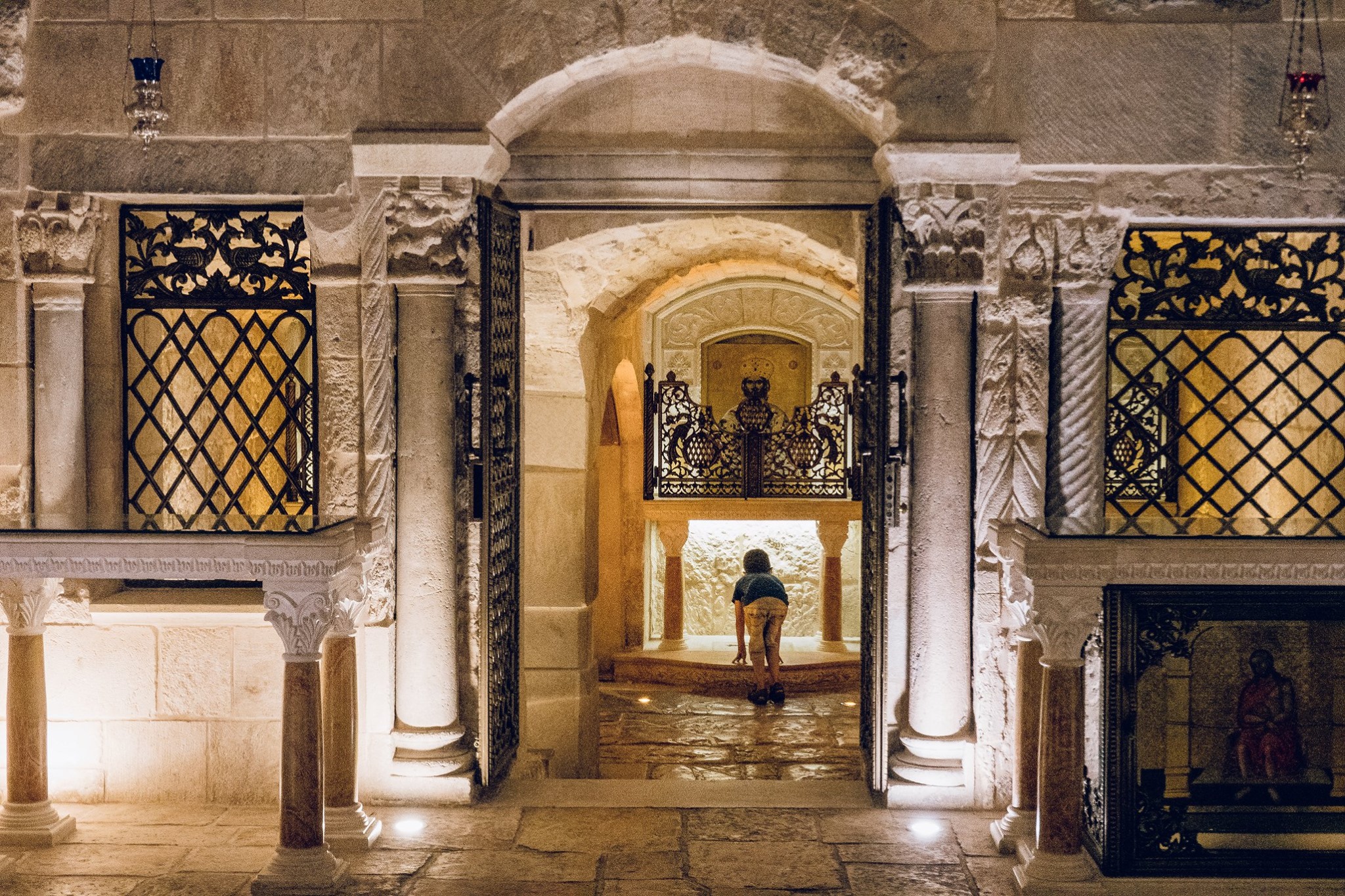
Church of the Holy Sepulchre. Photo credit: © Dmitry Mishin
Church of Our Lady of the Sun
Located at the 4th Station along the Via Dolorosa this Armenian Church marks the place where Mary saw her son pass by carrying the cross. Within the church is a beautiful 5th-century mosaic floor, imprinted in the floor is the outline of two sandals said to be the footprints of Mary.
Church of the Holy Face
Church of the Holy Face - JerusalemThis small church is run by the Little Sisters, a Greek Catholic order, inside you can see restored Crusader arches.
Monastery of St. Charalambos
This is a Greek Orthodox monastery located at the 8th Station along the Via Dolorosa.; it marks the place where Jesus comforted the lamenting women.
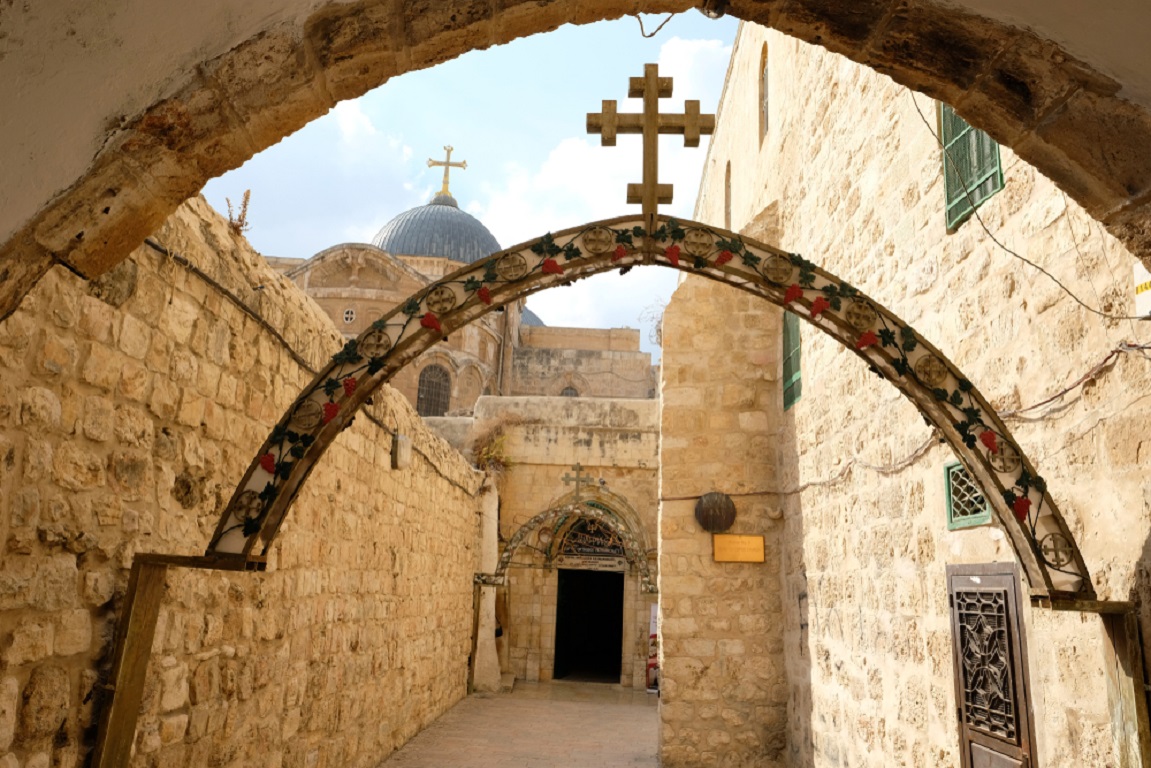
Near the Church of the Holy Sepulchre, Jerusalem. Photo credit: © Shutterstock
St. James Cathedral
Located in the Armenian Quarter, St. James Cathedral is dedicated to James the Great, one of the apostles, and James the Less, Jesus’ brother who was also the first bishop of Jerusalem. It is thought to have been built on the site where Herod killed James the Great. An inscription above the main entrance features the date 1488 but earlier churches on this site date back to the 6th century. The Armenians are famous for their intricate artwork, ceramics mixed with metals and stone and the church displays many stunning examples of their talents. This is also the site of the Armenian library where there are more than 4,000 illuminated manuscripts and the Church of St. Toros which is covered with brightly colored glazed tiles. The cathedral complex has several inner courtyards.
Dei res-Sultan Ethiopian Church
The Ethiopian Christians have been a part of Jerusalem since the 4th century, this church which is situated on the roof of the Church of the Holy Sepulchre was the only Ethiopian church in the city until 1888 when the land was acquired outside the Old City walls and the Debra Gannet Monastery was built.
The chapel is dedicated to St. Michael and the walls are adorned with brightly colored exotic pictures of the saint which date back 100 years. One of the paintings is of King Solomon meeting the Queen of Sheba who is believed to have come from Ethiopia. The ceiling of the church is covered with a starry night in blue, silver, and gold.
Dei res-Sultan Ethiopian Church. Photo credit: © Dmitry Mishin
Church of Saint Alexander Nevsky
This Russian Orthodox Church is located near to the Church of the Holy Sepulchre, the church is built over the remains of what is thought to have been the Judgment Gate where Jesus passed on his way to Golgotha. The church structure incorporates a section of the ancient Herodian city wall and a pagan temple constructed after 70AD. The plain stone structure is decorated with pictures of saints and icons, it is possible o see the remains of the Judgment Gate at the church.
St. Mark’s Syriac Church and Monastery
Located in the Armenian Quarter this church belongs to one of the oldest Christian denominations in the world. The Syriac Church practices the earliest known form of Christian liturgy and uses the Syriac language, which is a dialect of Aramaic, the language spoken by Christ. They believe that the church is located on the site of Mary of Jerusalem’s house, she was St. Mark’s mother, and the house features in the New Testament.
The church is associated with the Last Supper, an appearance by Jesus following his resurrection and the coming of the Holy Spirit at Pentecost. Here you can see a Byzantine painting on the leather of Mary and Jesus; inscriptions on the walls and the rich embellishments of the church decoration. The 12th-century church was constructed on the site of a 4th-century place of worship which is located in the church crypt.
To see the churches of the Old City of Jerusalem join one of multiple Jerusalem tours.
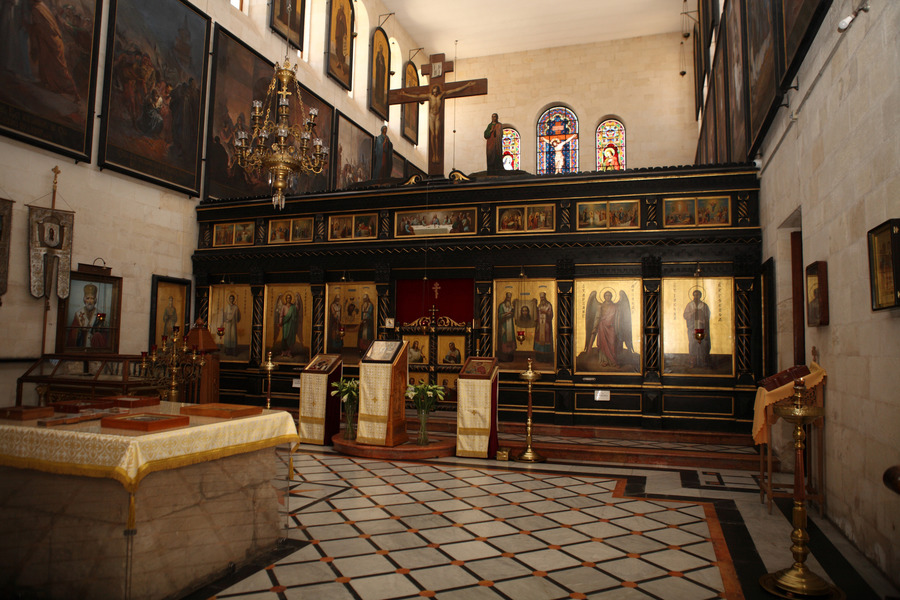
Church of Saint Alexander Nevsky. Photo credit: © Dan Porges
 Login / Register
Login / Register
 Contact Us
Contact Us
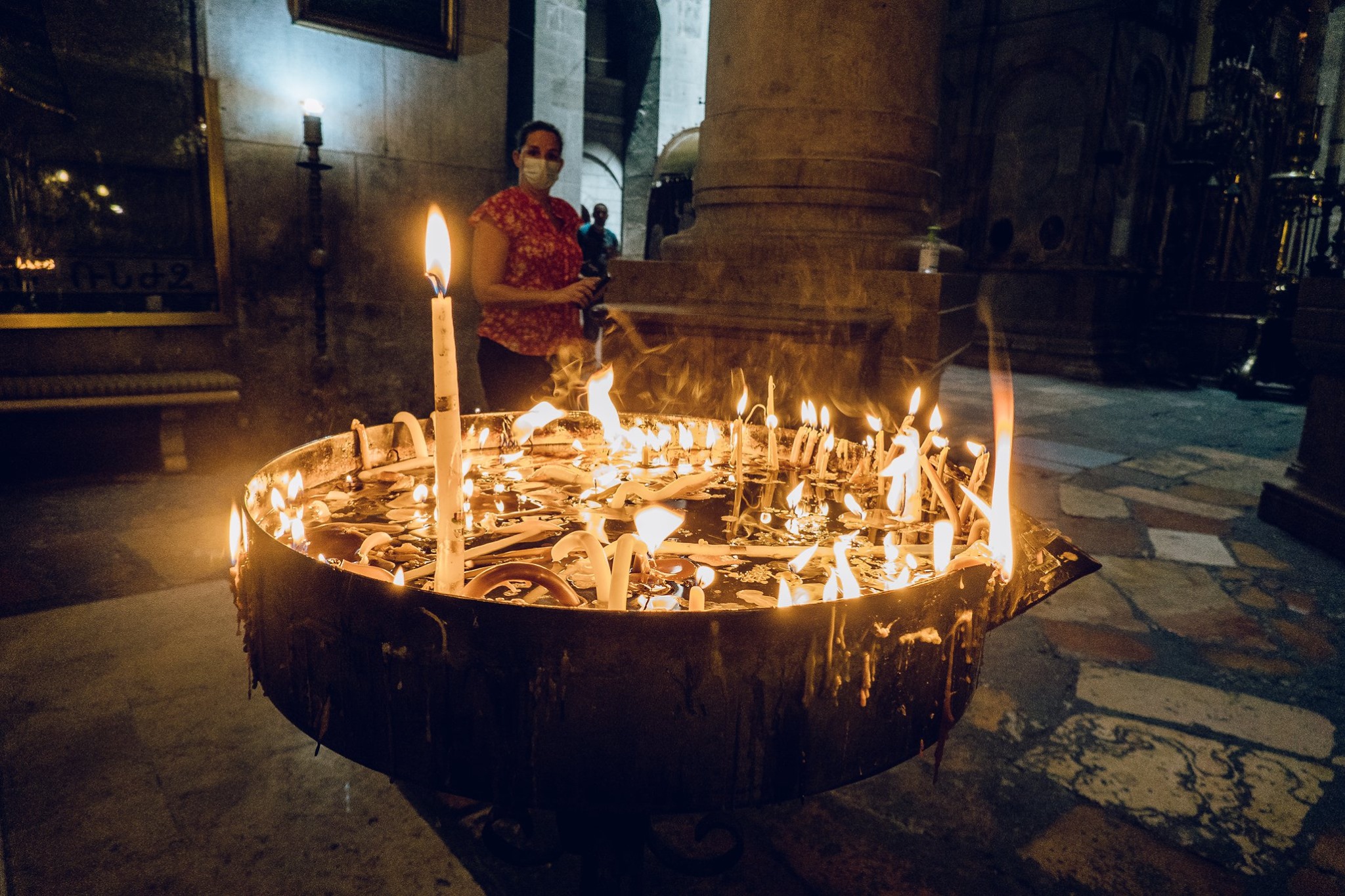
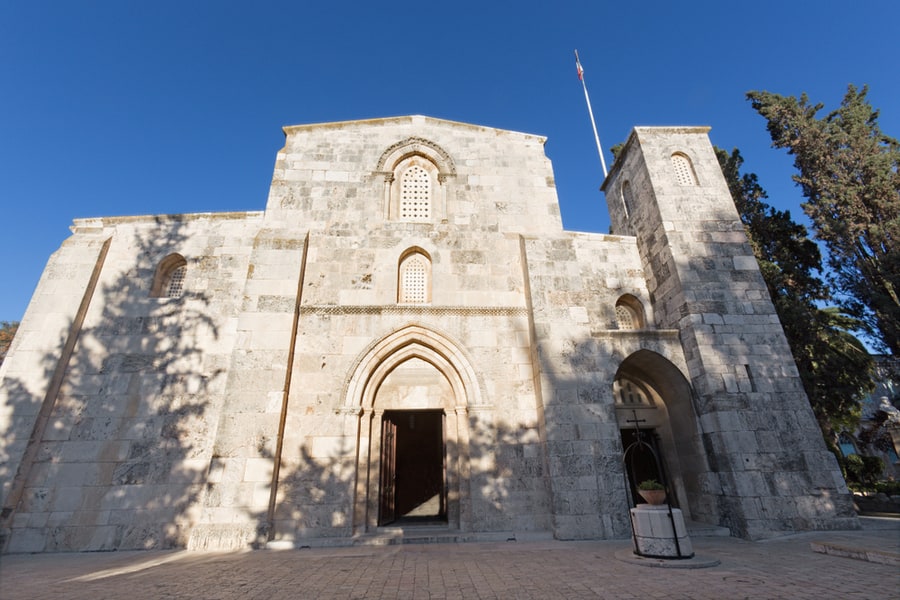
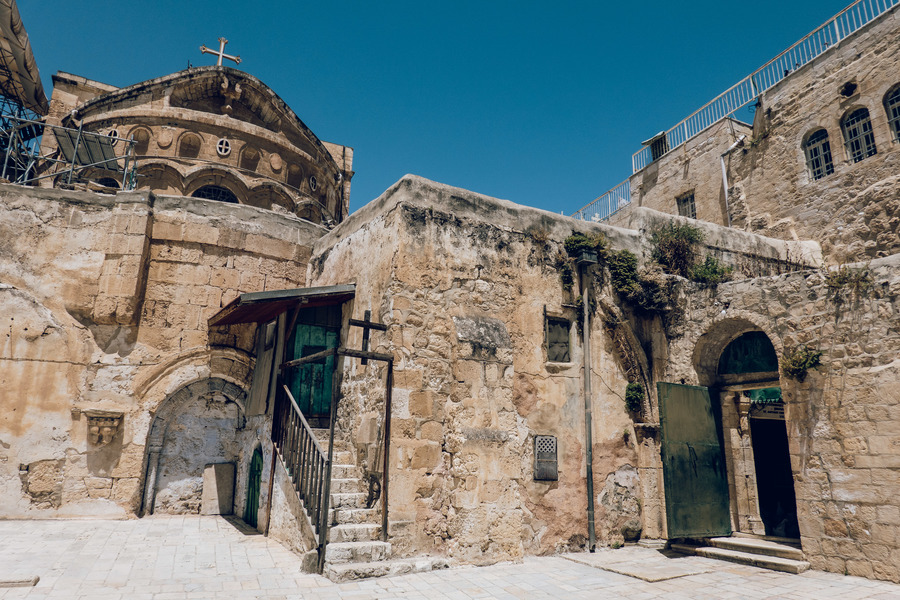
 Certificate of Excellence
Certificate of Excellence Guaranteed Departure
Guaranteed Departure Low Prices Guaranteed
Low Prices Guaranteed 24/7 Support
24/7 Support




